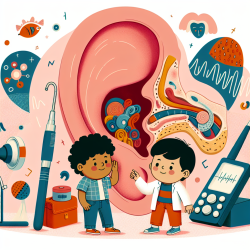Understanding the Audiological Profile in Williams Syndrome
Williams syndrome (WS) is a rare genetic disorder known for its distinctive cognitive and physical features. However, recent research has shed light on an often-overlooked aspect: hearing loss. A study titled "Audiological profile and cochlear functionality in Williams syndrome" offers valuable insights into the audiological challenges faced by individuals with WS.
Key Findings from the Research
The study evaluated 39 individuals, including 22 with WS, using pure tone audiometry, acoustic immittance measurements, and Transient Evoked Otoacoustic Emissions (TEOAE). The results were revealing:
- 50% of WS patients experienced hearing loss, predominantly sensorineural.
- Hearing loss was mild to moderate, affecting frequencies above 3 kHz.
- TEOAE analysis indicated hair cell dysfunction in the cochlea's basal region.
Implications for Practitioners
These findings underscore the importance of regular audiological assessments for individuals with WS. Practitioners should consider the following actions:
- Incorporate TEOAE in Routine Evaluations: TEOAE can detect cochlear dysfunction even when audiometric thresholds appear normal.
- Monitor High Frequencies: Focus on frequencies above 3 kHz where dysfunction is most prevalent.
- Advocate for Early Intervention: Early detection of hearing loss can lead to timely interventions, improving communication outcomes.
Encouraging Further Research
While this study provides a foundation, further research is needed to explore the genetic underpinnings of hearing loss in WS. Understanding the role of specific genes could lead to targeted therapies and interventions.
Conclusion
Practitioners working with children with WS should prioritize audiological assessments, including TEOAE, to identify and address hearing loss early. By doing so, we can improve the quality of life and communication outcomes for these individuals.
To read the original research paper, please follow this link: Audiological profile and cochlear functionality in Williams syndrome.










